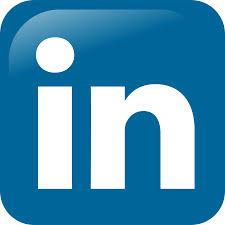
Forget about your resume.
Today, LinkedIn is your resume!
Your LinkedIn profile is your most important personification. Your LinkedIn profile can lead you to your next great job or… make you invisible. It’s that important.
LinkedIn has 560 million active users. This is the social media platform where your next boss hangs out.
Like it or not, recruiters, CEOs, hiring managers and HR pros all look at your LinkedIn profile first, and your resume much later. The challenging part is that they will look at your LinkedIn profile for literally, 5 seconds, then click to the next person. So, what does your LinkedIn profile convey in 5 seconds?
There are entire courses on improving your LinkedIn presence. I am not going to give you a full course. Just 6 makeover steps to get you started (listed in order of importance).
Step 1 – Profile picture
We humans process and remember faces better than words or data. Your face is your best ID. Your profile picture should be a close up of your face only (please no dogs, no buildings, no scenery, no partner cut out of the picture, no graduation pictures). If your profile picture is not currently your face only, change it right now.
Step 2 – Headline
Your headline is what you have to offer the world (not your current title and employer). LinkedIn gives you 120 characters to use in your headline. You should spend hours refining these 120 characters until it is perfect. Shoot for a headline that sums up your specialty or approach succinctly and supports the professional brand you’re cultivating. A complete, up-to-date, engaging profile tells the professional world you’re open for business.
DO NOT accept LinkedIn’s default headline for you (most people do this) and do not list your current title as your headline.
Bad Examples:
- Consultant for Fundraising at ABC, LLC
- Personal trainer at XYZ Fitness.
DO say who you are, who you help, and how you help.
Good Examples:
- Fundraising consultant who helps major non-profits raise more money. Clients include the Red Cross and YMCA.
- Personal Trainer who helps high school athletes get stronger and faster. Certified by the American Council on Exercise.
For more detailed instructions on improving your headline, read this.
Step 3 – Location
Be careful what your location says about you. If you want a job in California, but your location is Greater New York, you will NOT SHOW UP in searches. Change your location to where you want to get your next job or change it to something generic like the United States (you do not have to choose a specific city.) Here is mine.
Step 4 – Contact
Make sure that you are easy to contact with your email and cell phone listed publicly. Also, please please get rid of your university email address and get a gmail email address. A dot.edu address says that you haven’t entirely left the university nest.
Step 5 – Keywords
Pack your profile as dense as possible with industry keywords that a peer may search in LinkedIn or Google. This will help you show up in more LinkedIn searches. List what you did at each company in detail including specific industry words that someone may search.
Recruiters, CEOs, hiring managers and HR use boolean searches to find future employees and consultants. For instance, a CEO or HR head may search for a new Marketing Director using… “marketing AND upstream AND biologics AND California”. In this example, if your profile does not include “upstream”, you will NEVER show up in their searches, even if you have upstream marketing experience. Don’t become invisible because you don’t have the right keywords sprinkled in your profile.
Step 6 – Portfolio
If you are a professional who can show your work output (marketing or engineering etc) add a product portfolio to your LinkedIn. Example: https://www.linkedin.com/in/lawrencekiefer/ Here is a “how to” video on showing your work: https://www.youtube.com/watch?v=5-YOkJZomWU